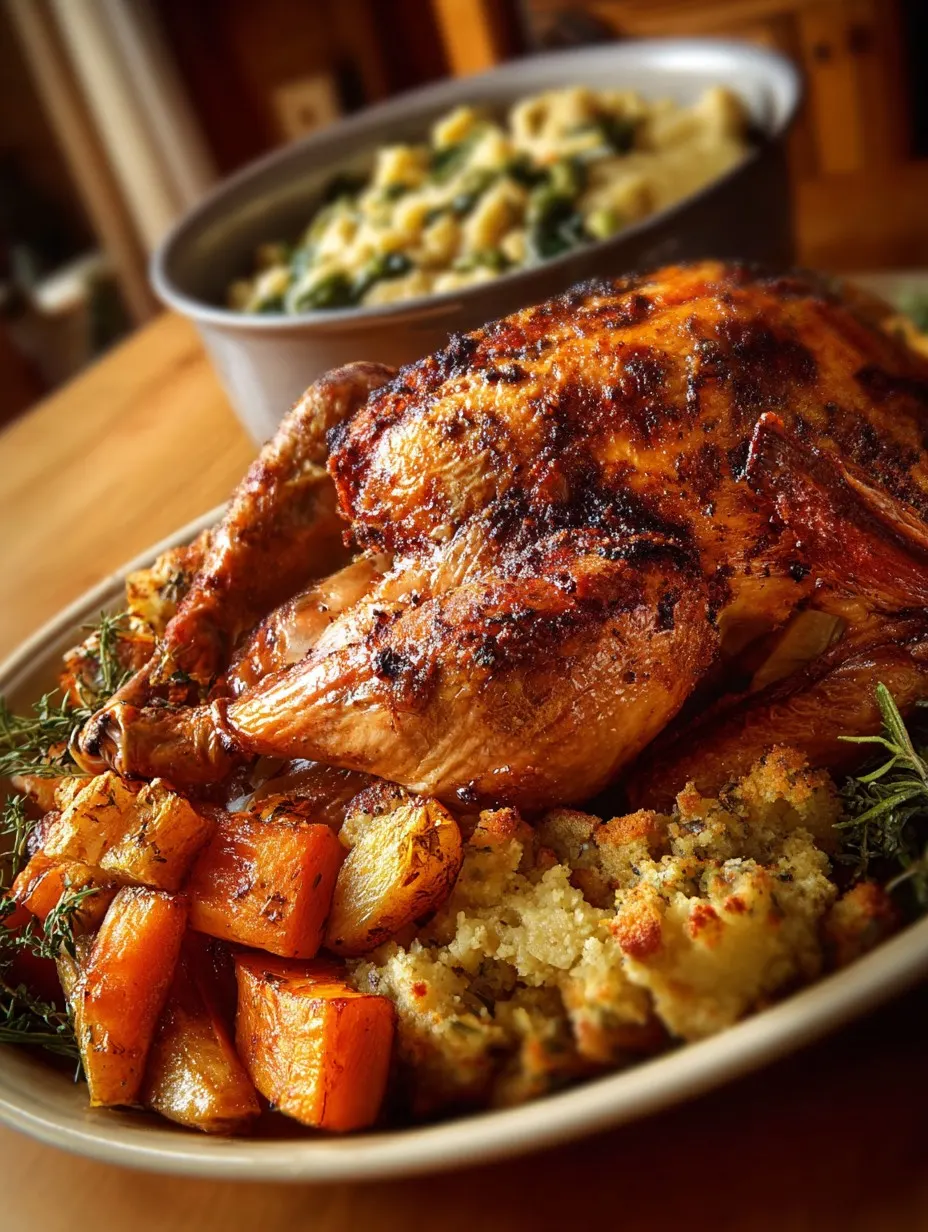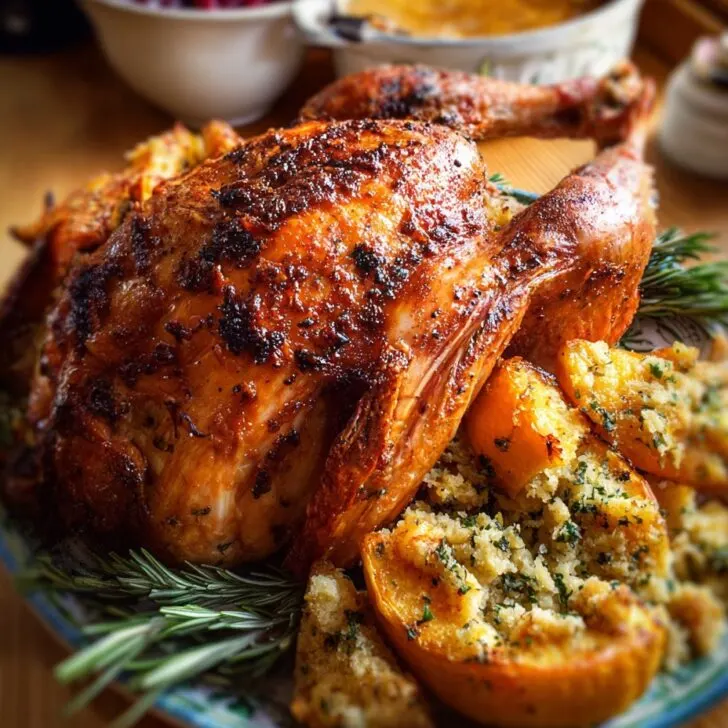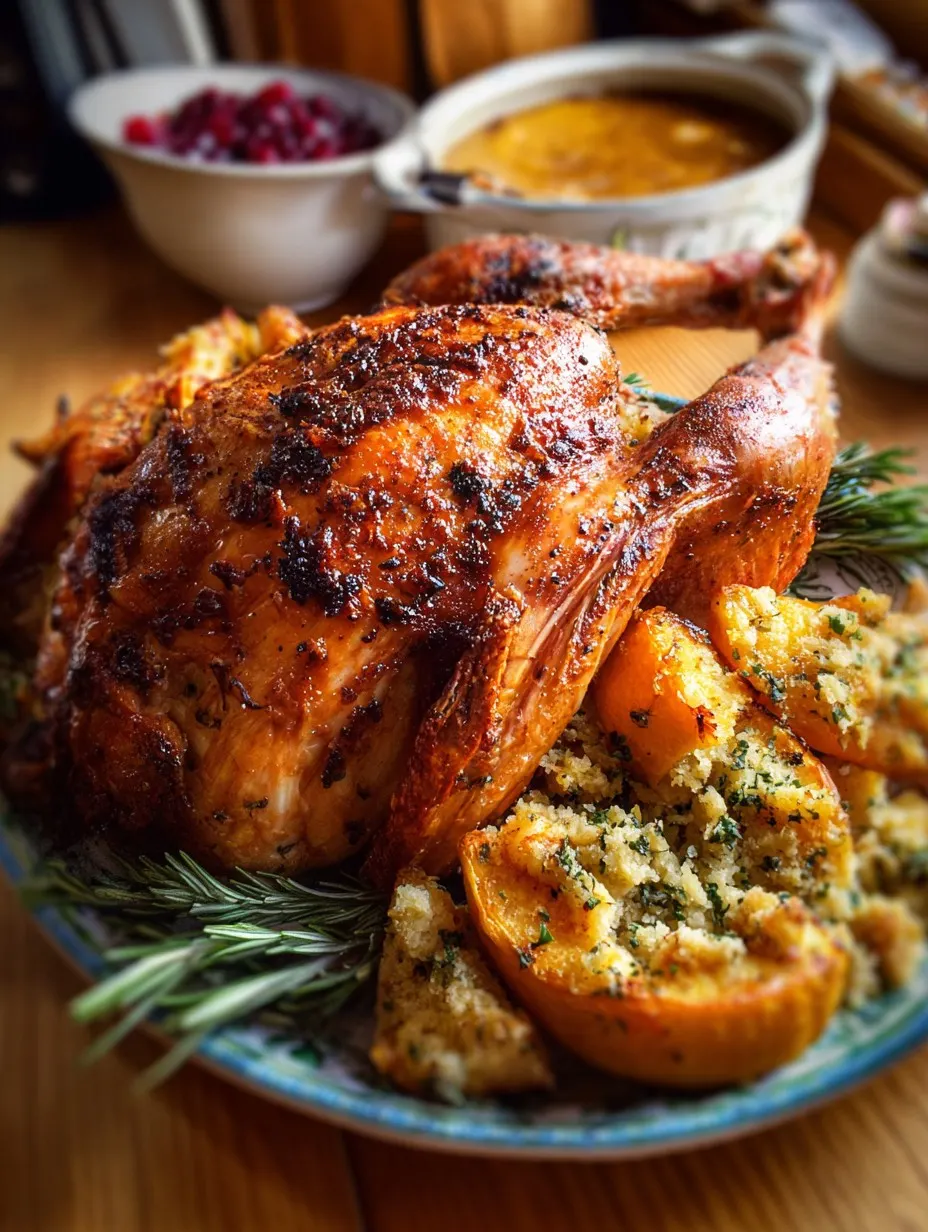This Isn’t Your Grandma’s Turkey—But She’d Probably Approve
Alright, so listen: I’ve been the self-appointed "Turkey Wrangler" in my family for the past seven Thanksgivings (if you count the year I forgot the giblets and still got compliments, which, sure, let’s count it). I used to think Thanksgiving turkey had to be some sacred, untouched relic, slathered in butter, maybe stuffed with more bread than sense. Then one year, disaster struck—a total defrosting fail. I can’t even say what got into me, but I improvised with a bunch of spices, oranges, and (this might sound random) maple syrup. And you know what? My uncle Marty proclaimed it "life-changing." Not that you should trust him, he once ate cold lasagna in the shower. But that’s how this oddball recipe was born.
Why This Recipe? Well, My Folks Don’t Leave Leftovers
I keep making this because it’s like turkey with a passport—bold, bright, a bit nutty (kind of like my family). My crew demolishes the bird and fights over the last sticky pan juices—my mom actually brings tupperware "just in case." Also, it’s almost impossible to mess up. I did once undercook it (the year I got distracted watching turkey tutorials on YouTube), but honestly, nobody noticed with all the gravy poured over.
The Stuff You’ll Need (Substitutions, Because Life)
- One whole turkey (around 12 lb, but I’ve done 14 and, on one sleep-deprived November, a 10-lber—just keep an eye on it)
- 1 big orange, sliced (you could use clementines or even a lime, on a bet)
- 4 garlic cloves, smashed (once used jarred garlic; it worked fine, though the purists in my house made a face)
- ¼ cup maple syrup (honey totally flies if you’re out—plus it’s cheaper, usually)
- 3 tablespoon Dijon mustard (granular, smooth, whatever, just not yellow ballpark style—unless you’re into that sort of chaos)
- 2 tablespoon soy sauce (I know, but trust me here—Worcestershire works in a pinch, but not quite as good)
- Big handful of fresh thyme or a good shake of dried thyme (My grandmother swore by McCormick)
- 3 tablespoon olive oil (one year I ran out and used half butter; honestly, it was delicious)
- Salt and pepper, loads
- 2 cups low-sodium chicken stock (or water, or white wine if you’re feeling fancy)
How I Make It (Mostly Precise...ish Directions)
- Pull out your turkey. (Remember to get rid of the neck, etc.—I left it in once, it wasn’t pretty.) Pat it dry; really go at it with paper towels.
- Preheat oven to 425°F (or 220°C for my metric pals—Serious Eats has thoughts on oven temps but honestly, just make sure it’s hot.)
- Mix maple syrup, Dijon, soy, olive oil, and a ton of salt and pepper in a bowl. Smear this all over the turkey, top and under the skin if you can. This is delightfully messy—I always end up sticky to the elbows.
- Shove slices of orange and smashed garlic everywhere: cavity, under the skin, even the pan. Scatter thyme around. Pour in chicken stock at the pan’s bottom.
- Bake at high heat for 30 min, then lower to 350°F (180°C) and cover loosely with foil. Roast for about 2–2.5 hours depending on size. Mostly, I poke the thigh with a thermometer (should read 165°F/74°C) but a good old carve-n-check works too.
- Halfway through, baste the bird (this is where I sneak a crispy skin sample, for quality assurance, obviously). If it looks weird or patchy at this stage, don’t worry—it sorts itself out.
- After it’s cooked, let the turkey rest while you argue about carving methods. At least 20 min. No one ever listens to me on this but trust me, it’s juicier this way.
Notes from Someone Who’s Messed Up a Turkey or Two
- If your glaze starts burning, just pop more foil on top. I used to panic about this—turns out, rescue is a sheet of Reynolds.
- Don’t stress if you run low on chicken stock; water is fine. Occasionally, I even mix in a splash of orange juice. Adventurous, right?
- The oranges you jam in the turkey end up tasting weirdly savory and make great little chef snacks while carving.
Things I’ve Tried… and One Thing I Won’t Again
- Used bourbon in place of some maple syrup once—tasty and, ahem, potent. Maybe not for the kids.
- Accidentally grabbed sriracha instead of maple syrup—nope. Would not repeat, but my cousin still brings it up every year.
- Replaced oranges with grapefruit once; it’s… interesting, but a bit much.
Equipment—But Don’t Stress If You’re Short
- Roasting pan (If you don’t have one, a big baking dish lined with foil does the trick. I’ve literally used a lasagna dish.)
- Meat thermometer (mine’s always in a drawer somewhere, so sometimes I just do the red-juices test. Not scientific, but it works in a pinch)
- Tongs and a big spoon for basting (or you could, in theory, use a coffee mug—not that I’ve done that... okay, maybe once.)

Storing Leftovers (If You Have Any—Rare Sight)
Store in airtight containers, toss into the fridge, should be good for 3 days. I say should because, honestly, in my house, leftovers are wishful thinking. But if you somehow have restraint, it also freezes pretty well—just wrap in a couple of layers so it doesn’t go all freezer-burned. The pan juices are gold for next-day sandwiches.
How I Serve It (And What My Family Expects)
Always alongside my aunt’s stuffing (which is, weirdly, more like bread pudding), a mountain of mashed potatoes, and something green for color—not that anyone eats the green beans. Sometimes, we go rogue and use the leftover oranges as a garnish, looking suspiciously Pinterest-worthy. My brother splashes hot sauce on his turkey. Yeah, every family has one.
Stuff I’ve Learned the Hard Way (Pro Tips I Swear By Now)
- Don’t rush the resting time. I once carved it too soon and the juces just ran everywhere. Basically, let your turkey chill.
- If you’re running late, actually, cutting the bird in joints and roasting pieces works, but it’s not as impressive at the table. Your call.
- Basting is messy and sometimes feels pointless but do it anyway—the skin turns out gorgeous.
FAQ—Because Apparently, Turkey Is Complicated
- Can I do this with just a turkey breast?
Yeah! Reduce time and check your temp early. Actually, it’s easier; less stress, still tasty. - What if I don’t have fresh thyme?
Dried’s fine. Or skip it. No one’s policing your poultry. - Why maple syrup? Isn’t that for pancakes?
Doubtful? I was too! It just gives a subtle sweetness; you’ll see. - Is it supposed to look so dark at the end?
Yup, that’s the glaze doing its thing. As long as it’s not straight-up black, it’s all good. If in doubt, eat the crispy bits… they’re the best part, anyway.
Okay, I think that covers my unique turkey thanksgiving recipe saga. Give it a try—maybe it’ll become your new tradition (or, at worst, a story to tell next year). And now, time for a cup of tea… or, if you’re my uncle, cold gravy straight from the fridge. Cheers!
Ingredients
- 1 whole turkey (12-14 lbs), thawed
- ½ cup olive oil
- 2 oranges, sliced
- 1 lemon, sliced
- 6 sprigs fresh rosemary
- 4 cloves garlic, minced
- 2 teaspoons smoked paprika
- 1 tablespoon kosher salt
- 1 teaspoon freshly ground black pepper
- 1 tablespoon honey
Instructions
-
1Preheat the oven to 325°F (165°C). Remove giblets from turkey and pat dry with paper towels.
-
2In a small bowl, combine olive oil, minced garlic, smoked paprika, salt, pepper, and honey. Rub the mixture all over the turkey, including under the skin.
-
3Stuff the cavity of the turkey with sliced oranges, lemon, and rosemary sprigs.
-
4Place turkey on a roasting rack in a large roasting pan. Tie the legs together with kitchen twine and tuck the wing tips under.
-
5Roast turkey for about 3 hours, basting with pan juices every 45 minutes, until an instant-read thermometer inserted into the thickest part of the thigh reads 165°F (74°C).
-
6Let turkey rest for 20-30 minutes before carving and serving.
Approximate Information for One Serving
Nutrition Disclaimers
Number of total servings shown is approximate. Actual number of servings will depend on your preferred portion sizes.
Nutritional values shown are general guidelines and reflect information for 1 serving using the ingredients listed, not including any optional ingredients. Actual macros may vary slightly depending on specific brands and types of ingredients used.
To determine the weight of one serving, prepare the recipe as instructed. Weigh the finished recipe, then divide the weight of the finished recipe (not including the weight of the container the food is in) by the desired number of servings. Result will be the weight of one serving.
Did you make this recipe?
Please consider Pinning it!!


